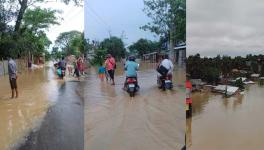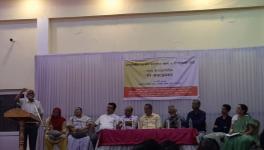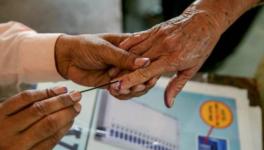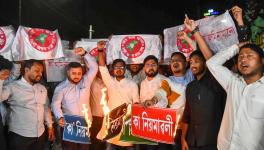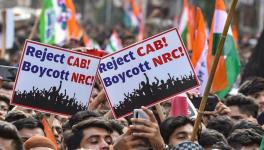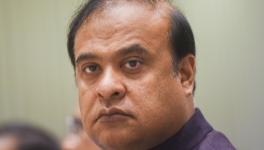Brahma Committee Report Recommends Strict Implementation of Land Laws
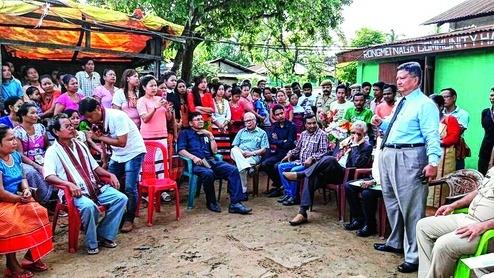
Image Courtesy: The Telegraph
The Committee for Protection of Land Rights of the Indigenous People of Assam headed by former CEC Hari Shankar Brahma submitted its final report to the Government of Assam. Though the committee had submitted its final report on January 18, details of the report are still opaque. The interim report that had been submitted in July 2017 caused a minor political storm since it appeared to have confirmed what was till then termed ‘irrational’ fears of the Assamese people. Whether the full report or any part of it will be released to the public can at this point only be speculated, as can the other details mentioned by various news agencies.
The committee was constituted on February 6, 2017, by an Order issued by the Governor of Assam. Hari Shankar Brahma was appointed as the Chairman of the committee with Rohini Kr. Baruah, Dr Ramesh Barpatra Gohain, Anil Bhattacharjee, Srikumar Dahotia and Ajoy Kumar Dutta as members, and Rajesh Prasad as the member secretary. The committee was directed to submit its report within three months, however, on November 27, the term was extended until December 31, 2017.
The committee sought to determine how much land had been encroached upon by persons of doubtful citizenship, to this end they defined citizenship based on the criteria followed by the NRC. The committee relied on satellite imagery, details of the tribal belts as well as the land that was in the government’s possession. The committee also sought details on the number of landless persons in the state. A preliminary finding was that the average land holding in Assam was around one bigha, a little less than an acre. The committee also directed the government to hold back its eviction drives, till the final report is submitted.
Various Assamese pressure groups sought to lobby the committee, one group alleged that the land rights of tribals had been disregarded and they had been denied land occupancy certificates despite having lived on the land for generations. They also appealed to Brahma to expand Chapter X of the Assam Land and Revenue Regulation 1886 in the widest and most progressive sense. The other group lobbied for 1951 to be considered the cut-off year as opposed to 1971, though it is also being followed by the NRC.
By July the interim report was submitted. The interim report found that around 85,000 families had illegally occupied land around Guwahati. They submitted that the government ought to take steps to rehabilitate them in townships around the city. Brahma also recognized that some of those who had illegally occupied land in the hills around the city had received land documents. However, many had not, and hence ought to either be relocated or to receive land documents. The committee was alarmed that there had been no land survey since 1964 and recommended in its interim report that land should be distributed to the landless. They also recommended that the Union Government sign a repatriation agreement with Bangladesh to deport illegal immigrants from Bangladesh once they had been identified.
The interim report also caused a minor controversy as it alleged that a sitting MLA in the Assam Assembly was a citizen of Bangladesh. Both the ruling party and the opposition MLAs traded barbs over it. The ruling party stated that the MLA in question must be an opposition MLA since all but one Muslim MLA are in the opposition. A bold accusation, though it is not certain whether the MLA referred to in the report was a Muslim or not. The INC appealed to the Union Government to constitute a probe into the allegation levelled in the interim report.
It has been reported that the final report has recommended that the government strictly implement the land laws of Assam. In this regard, the committee also recommended that the government undertake eviction drives, and reclaim forest, tribal and government land from encroachers. Together with the recommendations of the interim report, it would appear that a mass eviction and rehabilitation drive has been recommended. To some, it may appear that there is an element of politics, in forming the committee, as well as its recommendations. This becomes more glaring given that the NRC has been directed to be completed by June 30 this year. However, unless the report is published all that can be said on it, is mere speculation. Objections may be raised in the manner the government acts on the recommendations if it chooses to act at all. Yet in the polarised polity of India, once again, the tribals are likely to face the brunt of the politics around the report.
Get the latest reports & analysis with people's perspective on Protests, movements & deep analytical videos, discussions of the current affairs in your Telegram app. Subscribe to NewsClick's Telegram channel & get Real-Time updates on stories, as they get published on our website.











